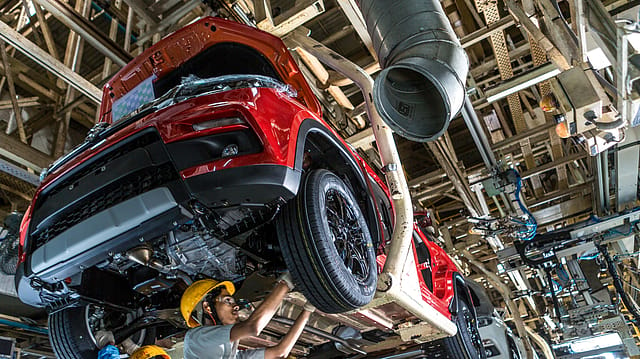Auto component replacement demand to grow by 6-8% in FY24: ICRA
ADVERTISEMENT

Auto component replacement demand is set to grow at 6% to 8% in FY24, according to the latest report by the rating agency ICRA. This increase in demand will be supported by underlying demand drivers such as an increase in mobility, improvement in economic activity, and healthy freight movement, amongst others, according to the report. The improvement in demand has resulted in a positive impact on cash flows for aftermarket or replacement dealers and garages.
Earlier, the rating agency had projected the operating margins of auto ancillaries to improve by 50-75 basis points in FY23, with margins (excluding-tyre sample) likely to be returned gradually to pre-Covid levels of 10.5% to 11% aided by the benefits of operating leverage and easing commodity prices and supply chain disruptions.
According to the report, in the last 5 to 10 years the component lifetime has improved by 15% to 20% owing to advancements in technology. As a result, the demand to replace older vehicles or parts has been lowered.
"While vehicle eligibility for scrappage by vintage remains significant, actual scrappage is likely to be lower as older trucks are generally used in hinterlands for short-haul operations by SFOs and are unlikely to be replaced," the rating agency says.
December 2025
The annual Fortune 500 India list, the definitive compendium of corporate performance, is out. This year, the cumulative revenue of the Fortune 500 India companies has breached $2 trillion for the first time. Plus, find out which are the Best B-schools in India.
The rating agency estimates the average age of medium and heavy commercial vehicles has increased to almost 10 years, whereas the average age of passenger vehicles has increased to 7.3 years in FY22, which is the highest in the past two decades.
"Demand for used cars remains healthy, aided by the growth of organised players, elongated wait periods for new cars, and improving financing penetration. The growth of organised players has enhanced the accessibility and reliability of aftermarket services and products and, in turn, supported demand. This apart, reduced imports and growth in the proportion of branded parts, deeper penetration in rural/semi-urban regions, and better awareness among consumers about vehicle safety and the importance of periodic maintenance are likely to facilitate growth in replacement demand over the medium term," says Shamsher Dewan, senior vice president and group head—corporate ratings, ICRA.
However, the report says that the demand for the auto component in the electric vehicle (EV) industry will be lower than that of ICE vehicles. "EVs will have significantly fewer parts compared to a traditional ICE vehicle, and thus maintenance requirements will be reduced. Also, the sale of engine and transmission products could be impacted by EV adoption," says Dewan.
The auto component imports in India stood at $18.3 billion in FY22, with China and Germany being the largest source markets, contributing 30% and 11%, respectively.
It had earlier said that the aggregate annual revenues of 49 auto ancillaries are expected to grow by 8-10% in FY23.
